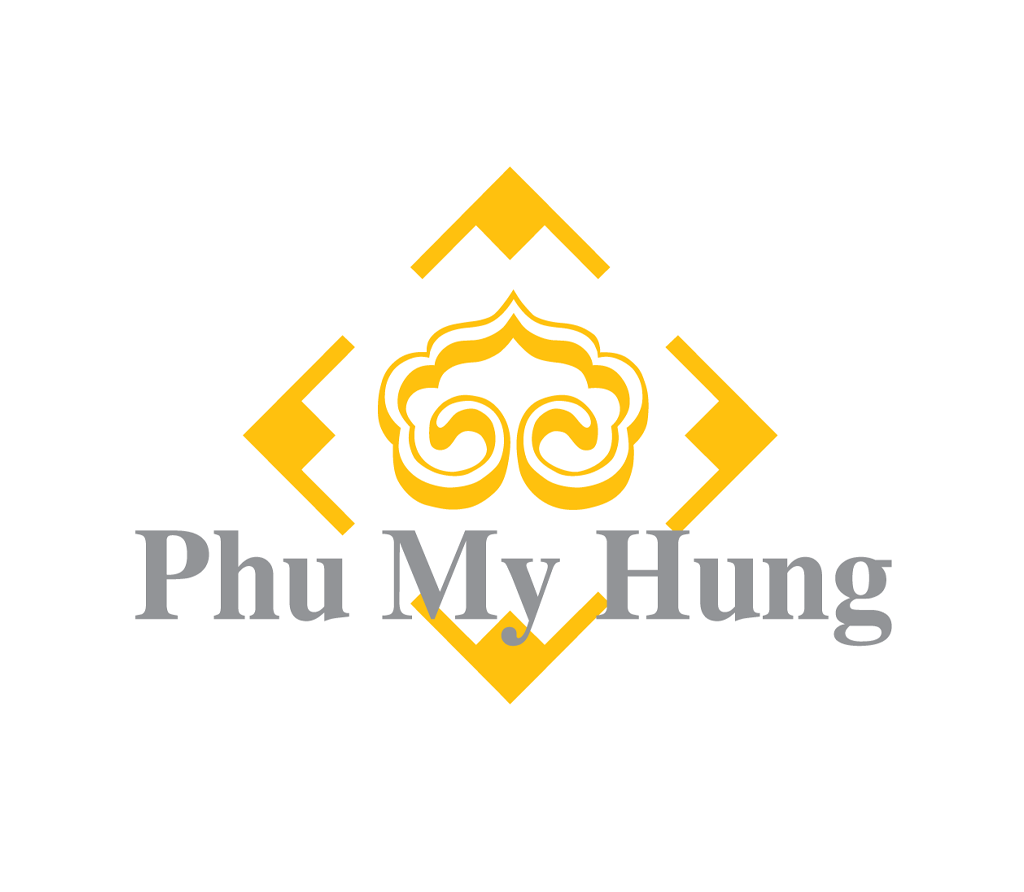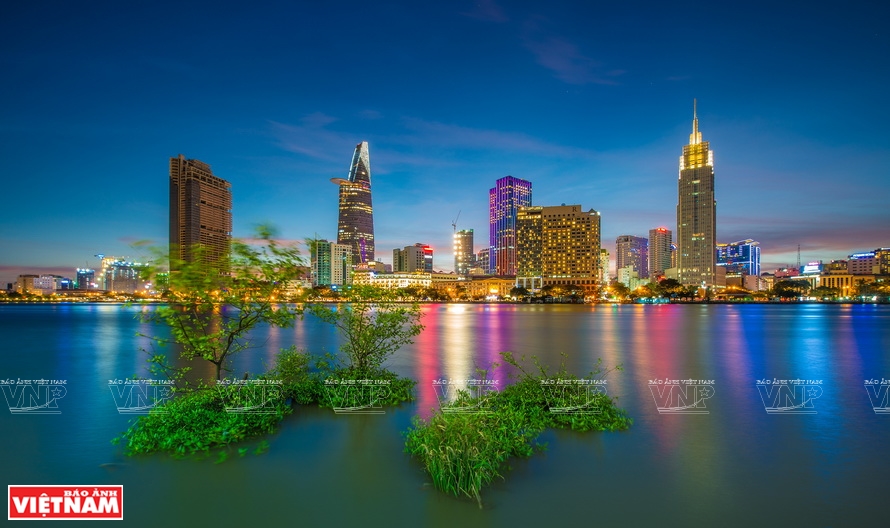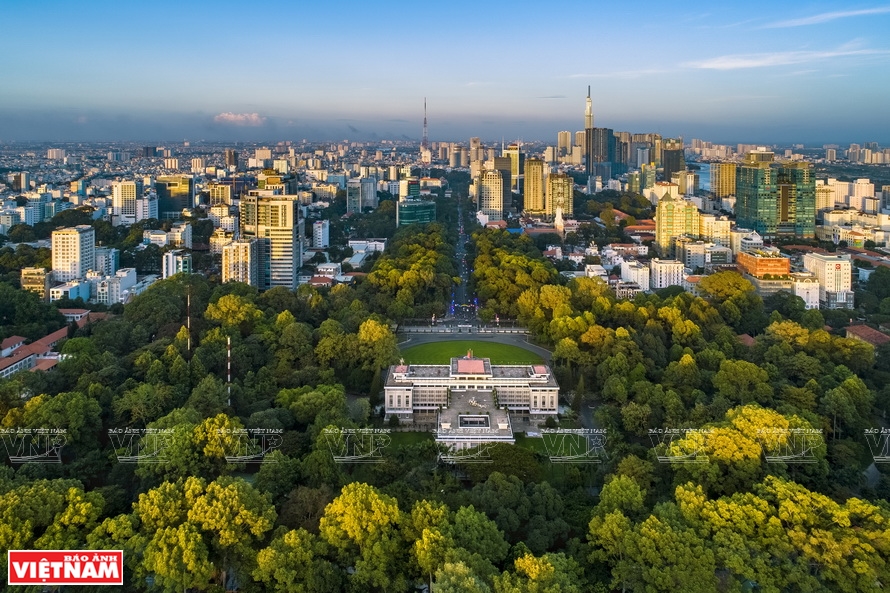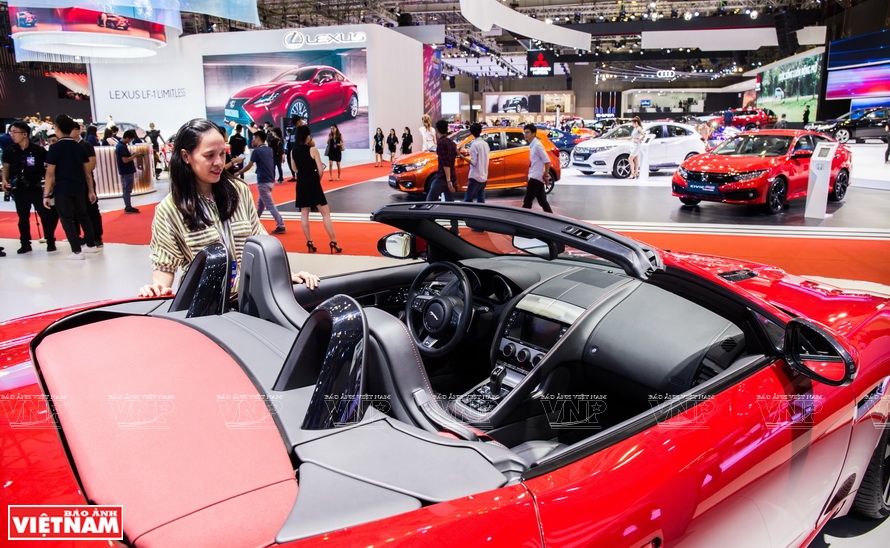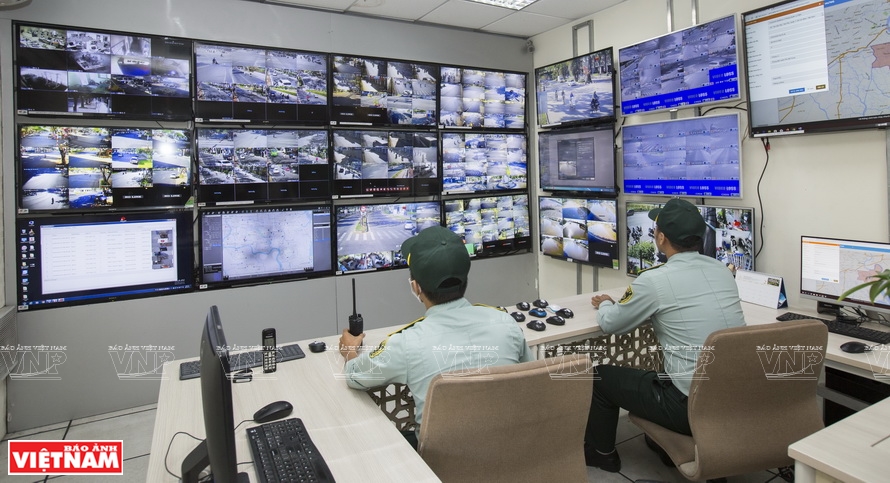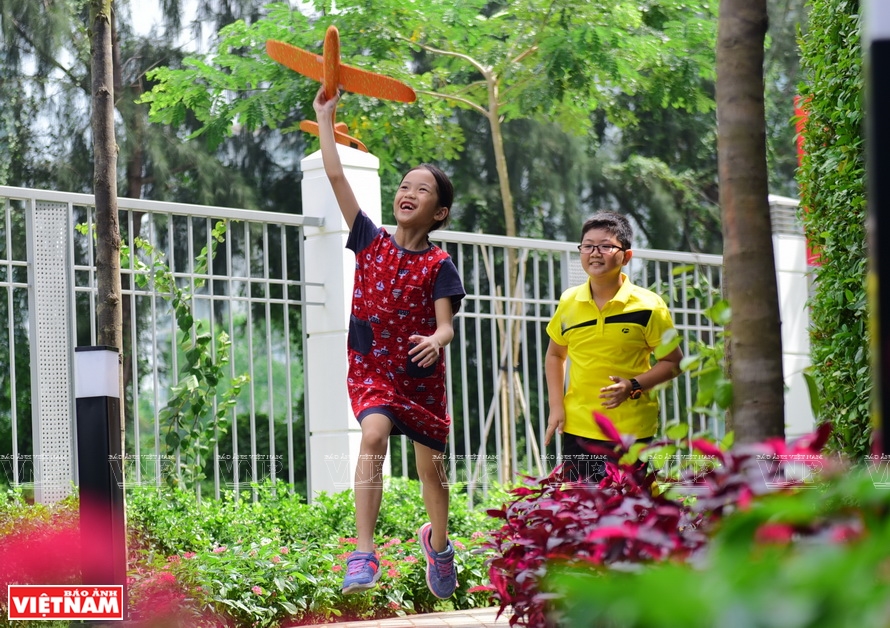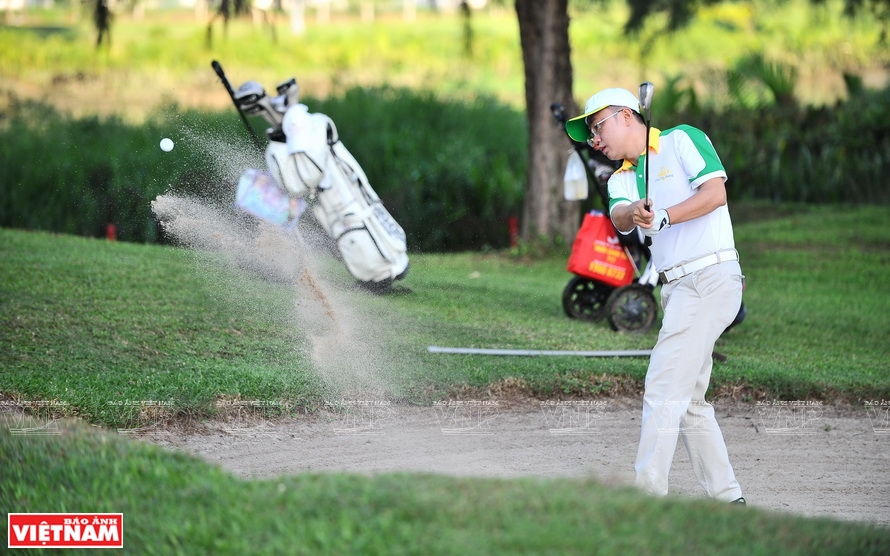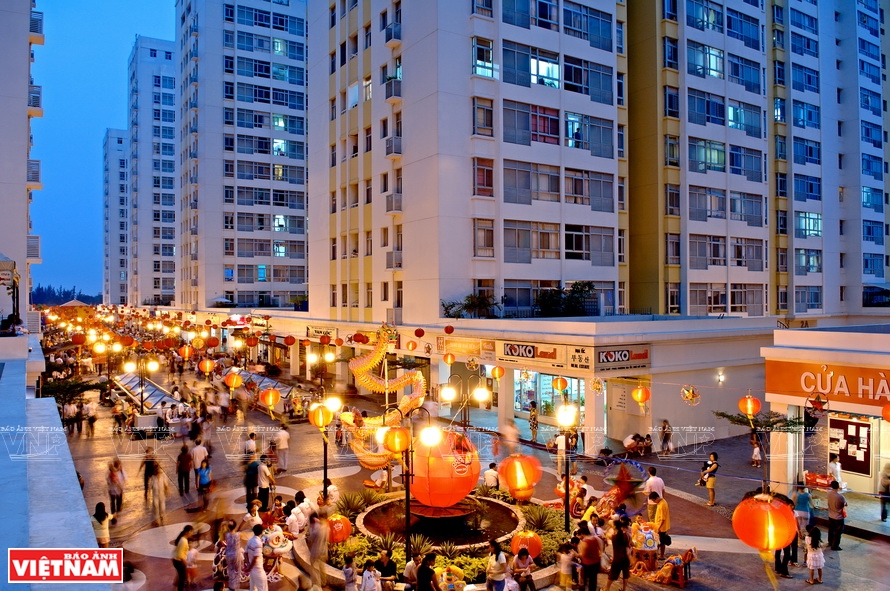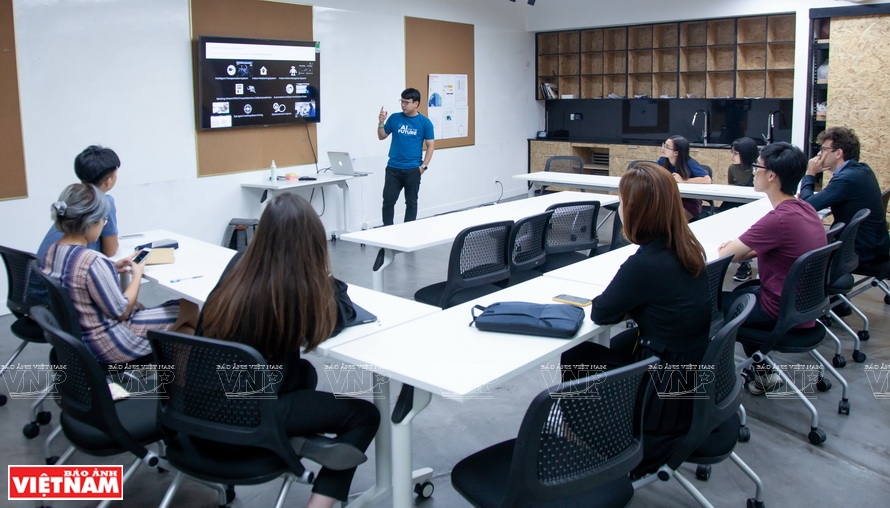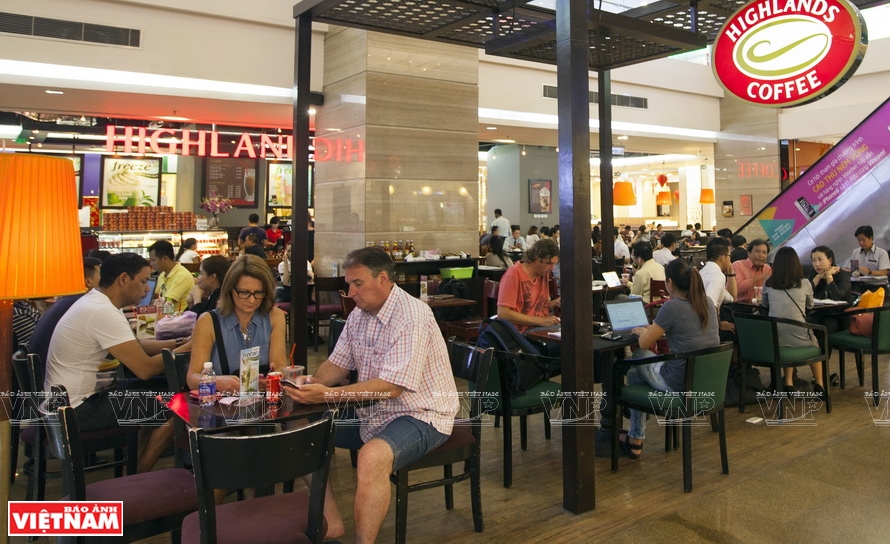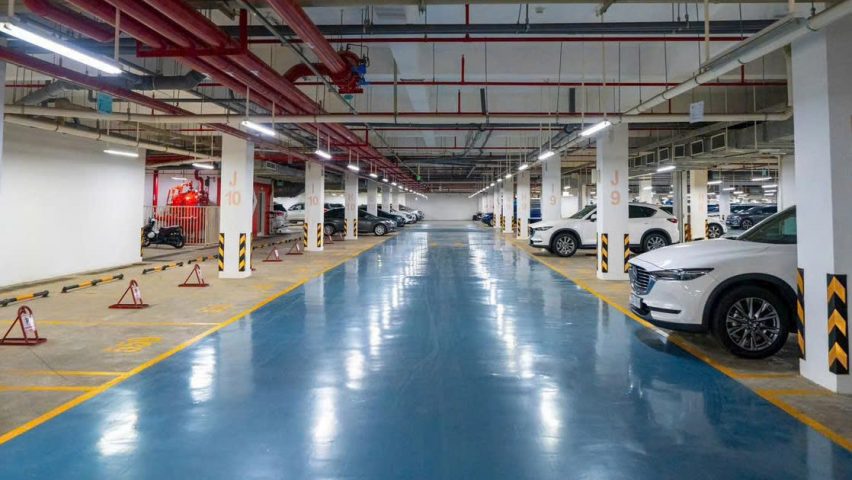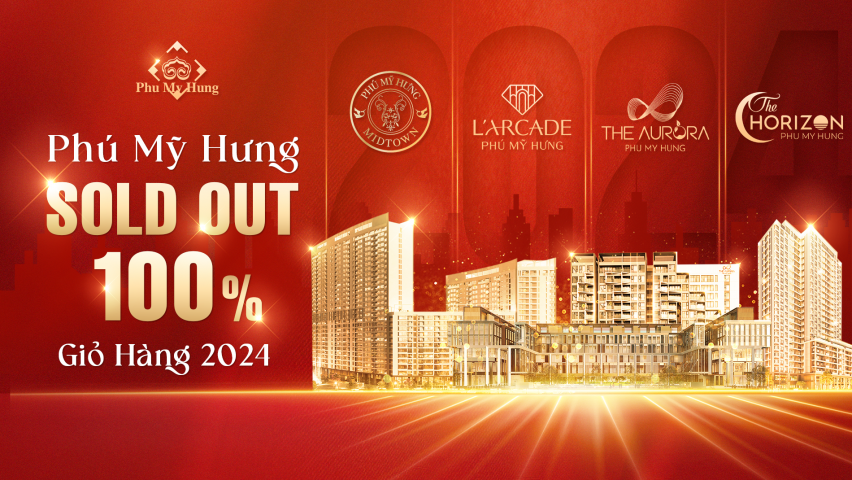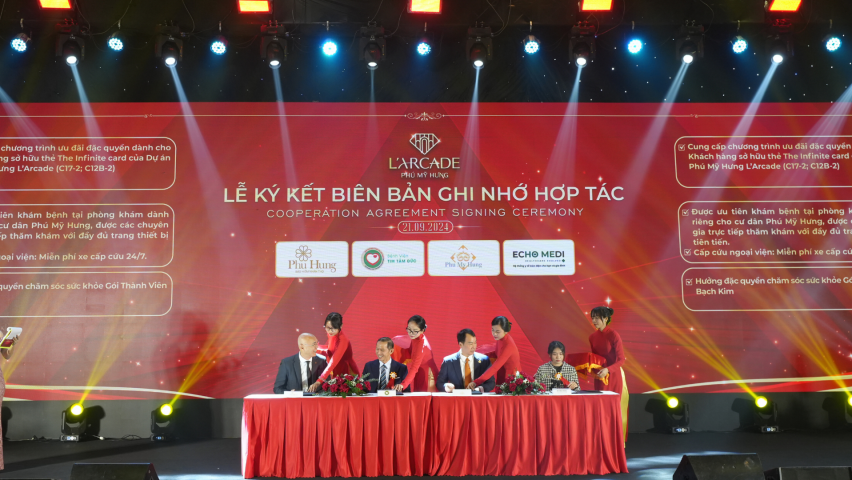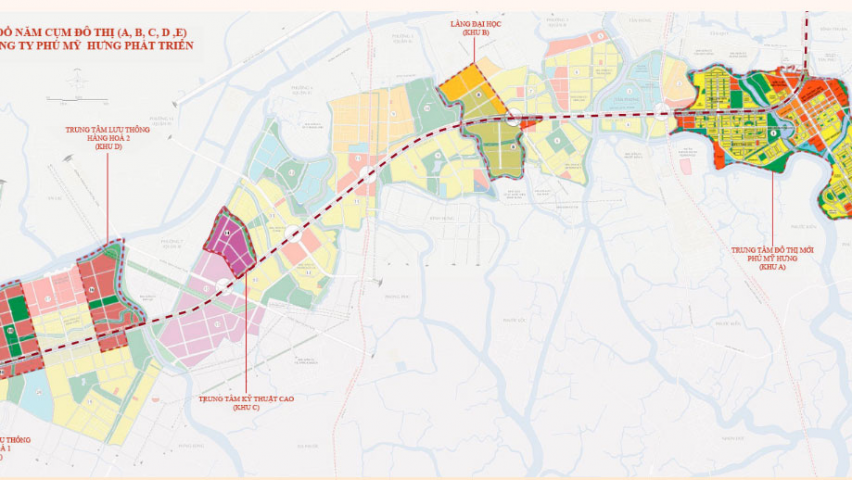Ho Chi Minh City, a modern metropolis
The city is home to skyscrapers, including Bitexco in district 1 and 461m-high Landmark in Binh Thanh district, which have become new economic icons of the city. At the same time, it still keeps intact old structures such as Saigon’s Notre Dame Cathedral, Saigon’s Central Post Office and the Municipal Theater.
Together with high rise buildings, Ho Chi Minh City boasts a modern transport infrastructure, including big roads located in the gateways to the city. They include Nguyen Van Linh road, Hanoi highway, and Pham Van Dong boulevard. The city is expected to complete the construction of a metro line 1 soon and is operating river bus services to meet the rising transport demand.
| Inaugurated in 2018, Landmark, at a height of 461m and 81 stories is the tallest building in Vietnam and one of the 20 tallest buildings in the world. |
A leading economic center, Ho Chi Minh City is set to become a smart urban center which can catch up with population growth while best serving the people.
The city has offered incentive policies to attract investment in developing smart urban centers to cater to the people’s demand for a high quality, safe and modern life while ensuring sustainable development.
Phu My Hung is the showcase of a modern urban neighborhood in Ho Chi Minh City, which was formed under the municipal authority’s policy to develop the city toward the East Sea. From a barely inhabited wetlands area with interlacing canals in South Saigon 27 years ago, Phu My Hung was built into a 443-ha multifunctional urban area home to nearly 40,000 residents from different countries.
The new urban center has a construction rate of only 26.5% of the total area, leaving the rest of the land for social welfare work and green parks. It is an urban center with the highest greenery coverage in Ho Chi Minh City with 8.9m2 of trees per person. It does not have tall buildings either, with the tallest one at only 29 stories.
| Following Phu My Hung, many modern urban centers with an area of 200 ha or larger have been formed in Ho Chi Minh City, including Diamond Island, Vinhomes Central Park, Sala, South Rach Chiec, Thu Thiem, and Lakeview City. |
Phu My Hung has been chosen by international groups, including Manulife, Starbucks, and Crescent Mall, to establish their offices. It is also home to international schools such as RMIT, SSIS, Renaissance, Taipei and Korean International.
Hoang Mai, who has lived in Riverside Residence for nearly 10 years, said, life in Phu My Hung is safe and comfortable because all infrastructure and facilities for study, work, leisure, sports and shopping are available.
“I now can’t distinguish clearly between Vietnam and South Korea because living here gives me a feeling of extreme comfort with a healthy and safe living environment and friendly and considerate Vietnamese neighbors and friends,” said Ha Ji Won, a South Korean resident in Phu My Hung’s Hung Gia. Ha Ji Won has lived for 13 years in Hung Gia, which boasts the largest South Korean community in Ho Chi Minh City.
Giang Son Dong & Phu My Hung’s Files
